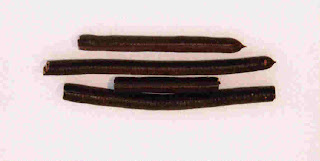No Massive Institutional Gold Market Change
Trace Mayer writes some good stuff, but his recent Massive Institutional Gold Market Change article hypes an midly interesting strategic development in the gold market. There are two statements he makes which are not correct.
“gold demand that was previously satisfied with physical bullion through forward contracts between private parties can now be satisfied with unallocated gold accounts”
This is the key on which the whole article hangs. The problem is that a significant majority, if not all, of institutional forwards are already settled via unallocated. Accordingly, this move by CME is not “a massive change” in the market – OTC market transactions are primarily settled via London unallocated accounts, and will continue to be if they move to CME. No change here.
As a result this so-called "scheme" provides no support for his conclusions that it "will allow for gold demand to be shunted into gold substitute products and keep the price of gold in fiat currencies low" or "the reason for this move is that physical gold bullion is getting increasingly scarce".
“Why the CFTC would allow supposedly gold-backed ETF shares to satisfy the physical commodity component in an exchange of futures for physical transaction” and "like settling either COMEX futures contracts or OTC forwards with GLD ETF shares"
That announcement is about Exchange of Futures for Physical (EFP) transactions, not physical settlement of a COMEX futures contract. I checked COMEX rule 113.02 and there is no mention of ETFs being allowed - only physical is allowed.
The issue with EFPs is explained better by Tom Szabo. His key point is that an EFP is an "exchange" and there is no change in the number of futures at the end of the transaction - therefore EFPs do not settle a COMEX futures contract as Trace claims. I would also refer to the comments of a retired precious metal wholesale dealer who comments on Seeking Alpha.
“gold demand that was previously satisfied with physical bullion through forward contracts between private parties can now be satisfied with unallocated gold accounts”
This is the key on which the whole article hangs. The problem is that a significant majority, if not all, of institutional forwards are already settled via unallocated. Accordingly, this move by CME is not “a massive change” in the market – OTC market transactions are primarily settled via London unallocated accounts, and will continue to be if they move to CME. No change here.
As a result this so-called "scheme" provides no support for his conclusions that it "will allow for gold demand to be shunted into gold substitute products and keep the price of gold in fiat currencies low" or "the reason for this move is that physical gold bullion is getting increasingly scarce".
“Why the CFTC would allow supposedly gold-backed ETF shares to satisfy the physical commodity component in an exchange of futures for physical transaction” and "like settling either COMEX futures contracts or OTC forwards with GLD ETF shares"
That announcement is about Exchange of Futures for Physical (EFP) transactions, not physical settlement of a COMEX futures contract. I checked COMEX rule 113.02 and there is no mention of ETFs being allowed - only physical is allowed.
The issue with EFPs is explained better by Tom Szabo. His key point is that an EFP is an "exchange" and there is no change in the number of futures at the end of the transaction - therefore EFPs do not settle a COMEX futures contract as Trace claims. I would also refer to the comments of a retired precious metal wholesale dealer who comments on Seeking Alpha.

Comments
Post a Comment